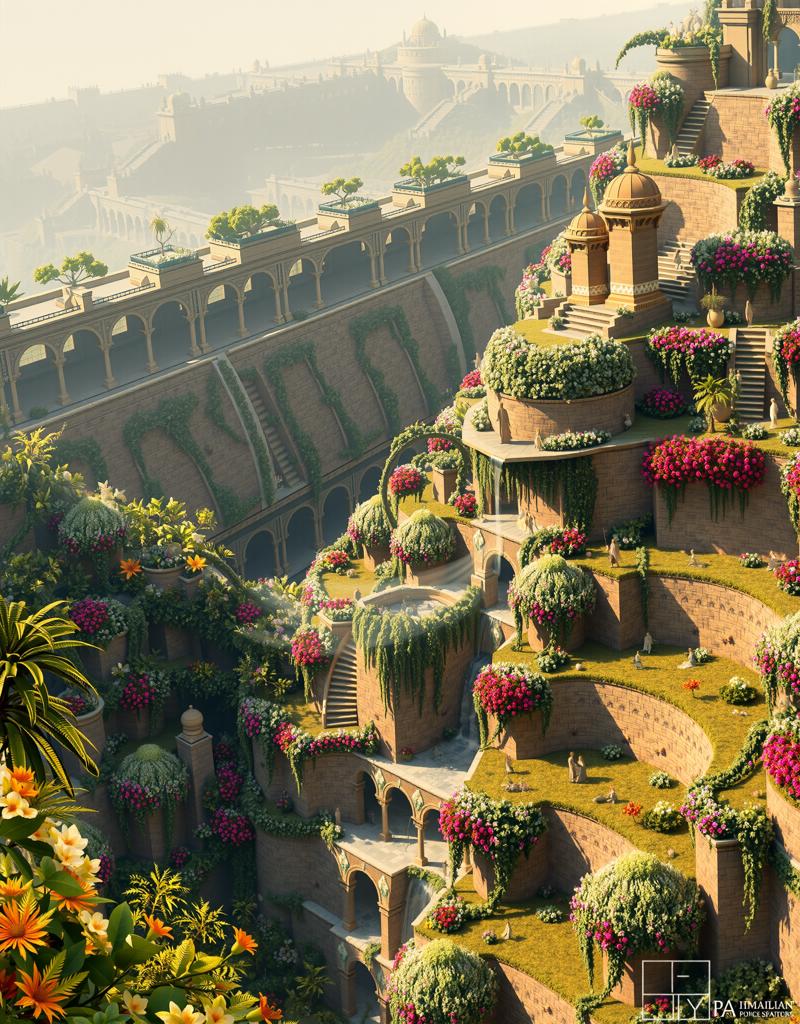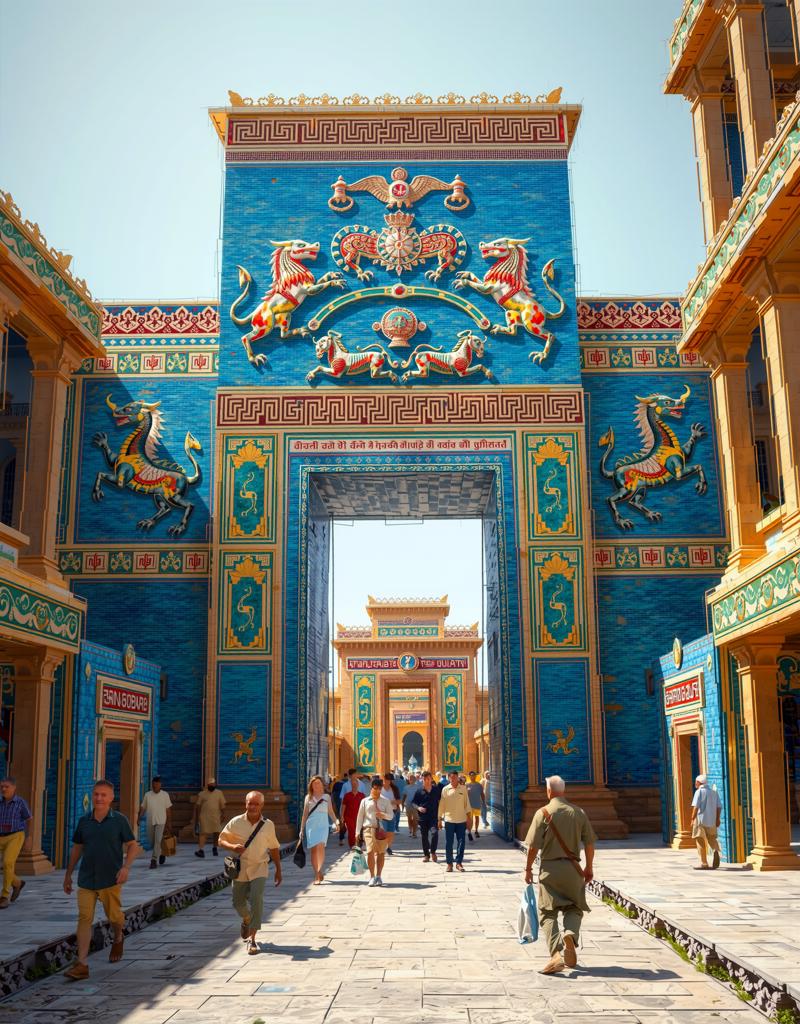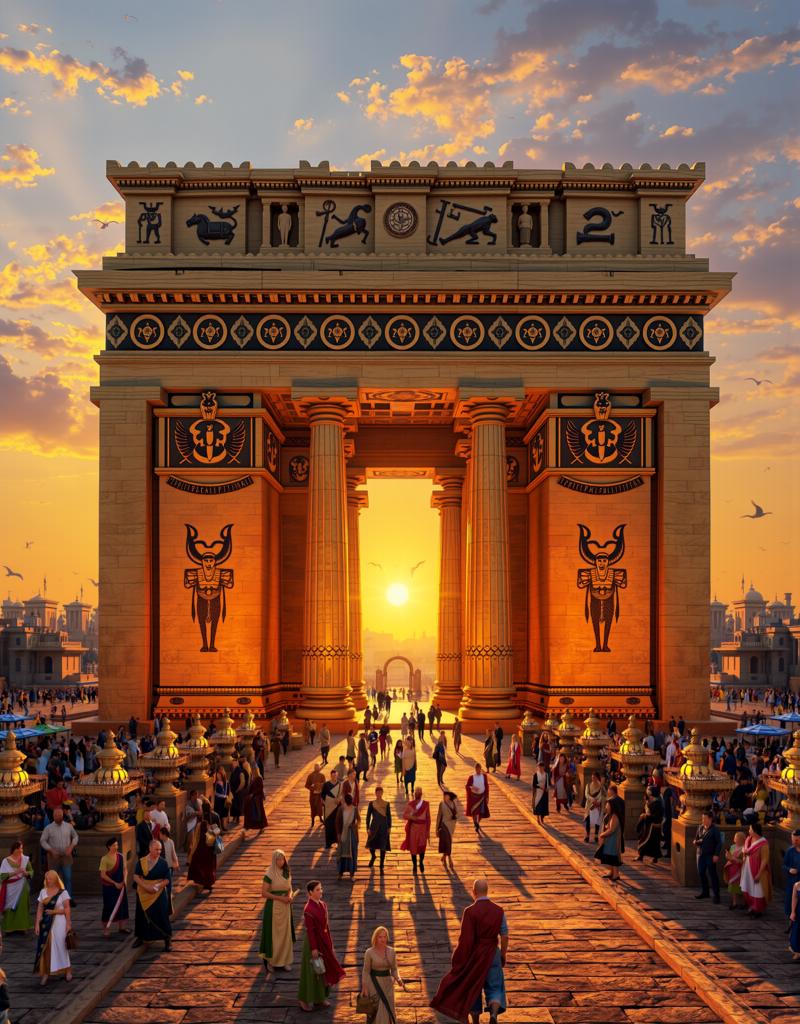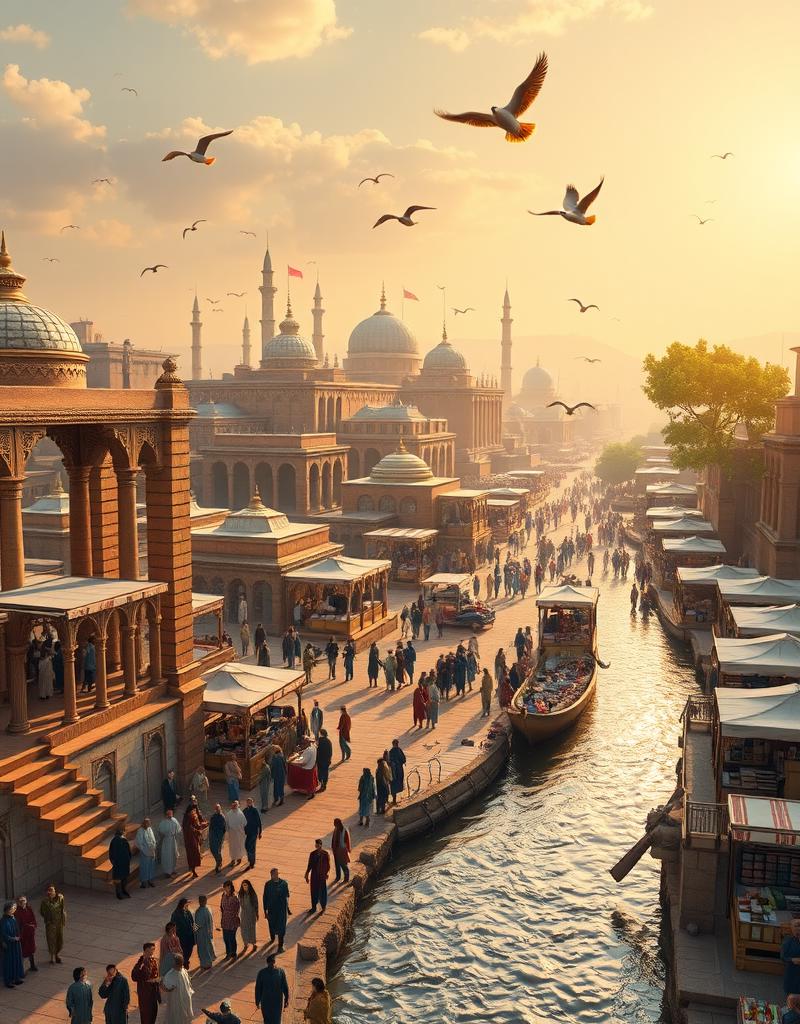In the bustling city of Babylon, a writer's imagination takes flight, weaving intricate tales of grandeur and mystery around its famous buildings. As the sun sets over the Euphrates River, casting a golden glow upon the ancient city, the writer envisions a world where towering ziggurats pierce the sky and temples echo with the whispers of history.

1. The Hanging Gardens of Babylon:
In the writer's vivid imagination, the Hanging Gardens of Babylon rise like a verdant oasis amidst the desert sands. Lush greenery cascades down terraced gardens, their vibrant blooms perfuming the air with a heady fragrance. As the writer envisions King Nebuchadnezzar II's grand gesture to his queen, Amytis, the gardens come alive with the rustle of leaves and the gentle murmur of water from intricate irrigation channels. The sight is nothing short of breathtaking, a testament to the boundless creativity and opulence of ancient Babylon.
 2. The Ishtar Gate:
2. The Ishtar Gate:
As the writer's pen dances across the parchment, the Ishtar Gate materializes before their eyes in all its splendor. Glazed bricks of cobalt blue shimmer in the sunlight, depicting fearsome dragons and majestic bulls in a mesmerizing display of Mesopotamian artistry. The gate stands as a sentinel, guarding the entrance to the city with an air of majesty and power that leaves all who behold it in awe. In the writer's imagination, the Ishtar Gate is not merely a structure but a portal to another world, where myths and legends intertwine with the tangible reality of Babylon.
 3. The Temple of Bel (Baal):
3. The Temple of Bel (Baal):
In the writer's mind, the Temple of Bel rises like a colossus against the Babylonian skyline, its towering spires reaching towards the heavens. Within its sacred precincts, worshippers gather to pay homage to the god Bel-Marduk, their voices raised in prayer and supplication. The temple's courtyards echo with the sounds of rituals and ceremonies, evoking a sense of reverence and devotion that transcends time itself. To the writer, the Temple of Bel is not just a place of worship but a testament to the spiritual fervor and cultural richness of ancient Babylon.
 4. The Tower of Babel:
4. The Tower of Babel:
As the writer contemplates the enigmatic Tower of Babel, a sense of wonder and awe washes over them. The tower, shrouded in myth and legend, stands as a symbol of humanity's eternal quest for greatness and the consequences of hubris. In the writer's imagination, the tower rises higher and higher, its construction a testament to human ambition and ingenuity. Yet, as the gods intervene and chaos descends upon the builders, the writer envisions a scene of both tragedy and triumph, where the folly of mortals meets the divine will in a timeless struggle for supremacy.

In the writer's mind, ancient Babylon is not merely a city of bricks and mortar but a tapestry of stories waiting to be told. Each building, each monument, carries with it a legacy of greatness and a whisper of the past that beckons the writer to explore its depths. As the sun dips below the horizon, casting long shadows over the ancient city, the writer's imagination continues to soar, weaving tales of wonder and enchantment around the famous buildings of Babylon.
